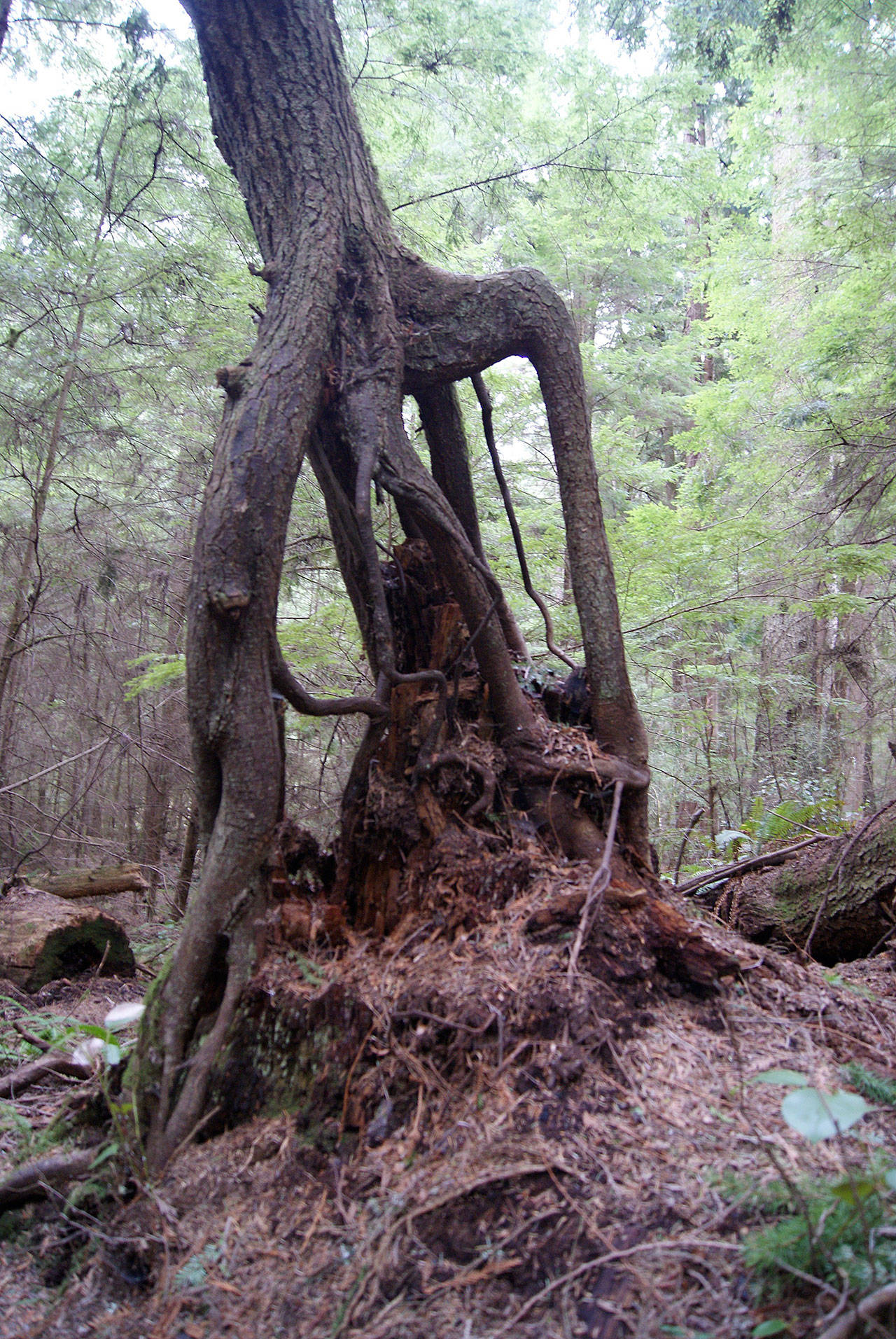The trees are dying but please don’t panic.
That’s the message WSU Extension Forester Kevin Zobrist is working to spread to concerned Whidbey Island residents.
“We’re seeing some unprecented levels of mortality on the landscape,” he said.
Zobrist first noticed an uptick in tree deaths in 2012 across Western Washington, he said, with a particularly large loss in 2018.
The top cause of these die-offs is due to drought or “water stress,” he said. Having record dry summers and wet winters don’t average each other out — extreme weather isn’t so great for many types of trees. Summer after summer of drought eventally leads to the trees giving out.
“In other words, the cup of water is getting smaller. The more straws that are in the water, the less of a drink everybody is going to get,” Zobrist said.
It’s gotten to the point where the public has noticed these trees deaths and became concerned, he said, so Zobrist and his peers are working to address questions and concerns.
There will be a public talk about “Dead and Dying Trees on Whidbey Island, What We Can Do to Help,” at 7 p.m. Thursday, March 28 at the Pacific Rim Institute in Coupeville. Zobrist is a featured speaker at the event hosted by the Island County Master Gardeners.
Steve Erickson of Whidbey Environmental Action Network isn’t too concerned himself because he sees the dying trees as a necessary and beneficial part of the forest ecosystem. He views humans with chainsaws and bulldozers as a greater threat.
“A lot of people freak out when they see a tree that’s stressed or dying,” he said. “… Generally it takes a lot to kill a mature tree.”
But the the rich soil from decaying trees sparks life for animals, insects, new trees and smaller plants, such as huckleberry bushes, he said.
Zobrist said he has seen the concerned members of the public take some “crazy” actions.
“People spraying for bugs that don’t exist,” he said, “cutting down other trees needlessly.”
So experts are working to educate people and keep them from doing some of those things.
The good news is that people don’t need to feel guilty, he said.
The bad news is that “it’s going to happen and there’s not a whole lot we can do about it.”
At the talk, he will discuss some actions that people can take, but there are no quick fixes, he cautions.
He acknowledges that people get emotionally attached to trees, especially ones that have been on their property for a long time or are special in some way to an individual. But there’s not a whole lot of reason or rhyme why one tree survives and one doesn’t, he said.
“We need to take a deep breath and focus on long-term solutions,” Zobrist said. “We have to adapt our expectations. We simply cannot expect the same things out of our trees and forests that we’ve come to expect.”
The changing climate patterns mean that the forest will look different.
“We need to expect and learn to tolerate that there are more dead trees in the landscape, and there will continue to be,” he said.
Zobrist doesn’t mean to be flippant to those worried about their trees, but he also wants people to know that the silver lining is that a tree can often provide more in death than in life as part of the greater forest ecosystem.
A significant number of species rely on dead trees, he said. However, it’s a question of balance.
Erickson said he believes the Northwest will eventually settle into a climate pattern similar to thousands of years ago, both warmer and dryer.


